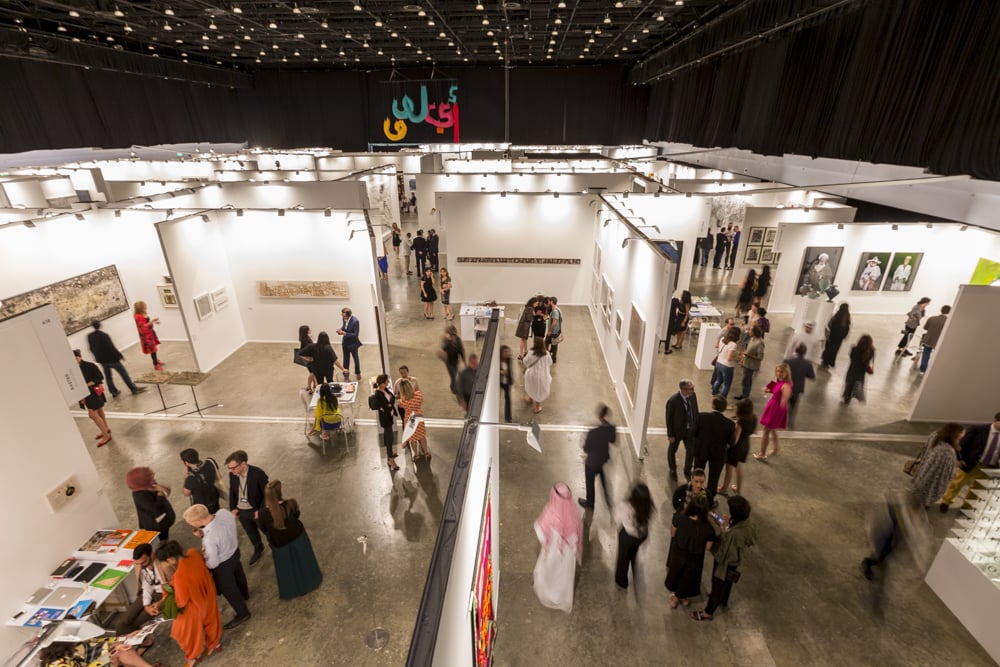
Image: Courtesy Art Dubai.

Myrna Ayad

Think of Art Dubai as the octopus’s head and then think of everything around it as the beast’s many tentacles. Consider that this octopus is now a decade old, which might not be a big deal in fair years, but for the region’s preeminent fair and its satellite activities, a lot of stops are being pulled.
Here’s what to see and to do in the days to come.
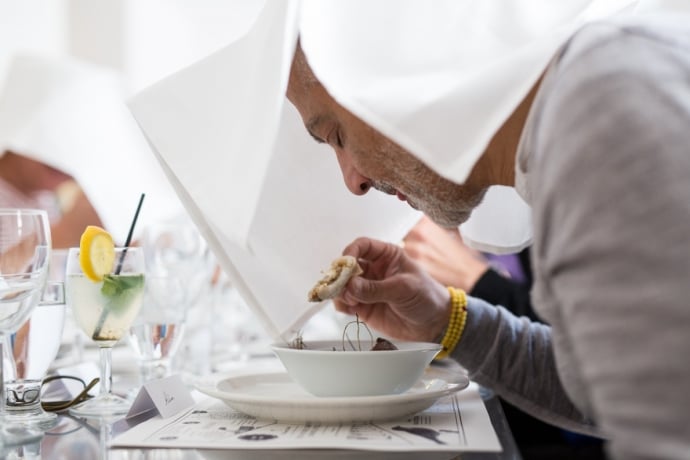
Tim Bowditch.
Image from ‘The Planetary Supper Club’ by Centre for Genomic Gastronomy at Delfina Foundation, London.
Where to Eat:
One of Art Dubai’s events that is already causing some chatter is the fair’s collaboration with the Delfina Foundation to present the pop-up Wedding Project: a gastronomic experience offered in perfomative meals by artists including Manal Al Dowayan, Larissa Sansour, and Taus Makhacheva, among others. It’s all happening March 16-19.
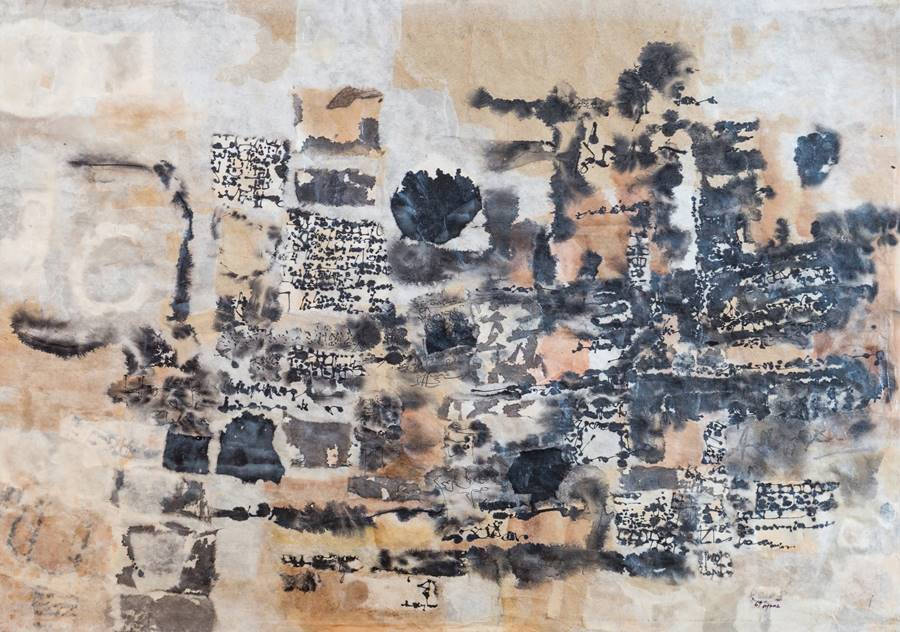
Maliheh Afnan. Untitled (1969).
Image: Courtesy Lawrie Shabibi and the artist.
What to See:
As Modern Middle Eastern art continues to gain momentum around the world, one important stop in the Art Dubai tour is the fair’s three-year-old Modern section featuring 13 galleries. Here are the rarely seen works of Saudi Modernist Mounirah Mosly, a pioneering artist of the Kingdom who shows through Jeddah’s Hafez Gallery; and the poignant works of the late Iranian-born Maliheh Afnan, whose works trace her experience from the 1960s through to the Lebanese Civil War and to subsequent years spent in Paris.
“Art historians and curators are looking back and rediscovering female artists who perhaps were not given the attention they merit—Maliheh will be seen as one of those pioneers,” says the gallery’s Asmaa Al Shabibi, who met the artist last summer. “In many ways, her paintings reflect her own life and personality: multilayered, elegant and understated.”
Elsewhere in Modern, Ayyam Gallery presents a dual showing of works by the Palestinian New York-based Samia Halaby and the late Syrian Moustafa Fathi in what will be a fragment of representation of abstraction in the Arab world.
Keeping within the theme of abstraction (which seems to be the dominating style at this year’s Art Dubai) and moving on to the fair proper with its 76 galleries, New York’s Marianne Boesky gallery presents a large-scale work by the Syrian artist Diana Al Hadid. It’s got a Jackson Pollock feel to it, except where the abstract expressionist layered his canvas, Al Hadid burns through it to achieve her trademark frayed aesthetic. Similar works by the New York-based artist hang at the New York University Art Gallery in Abu Dhabi, which hosts an exhibition of her work that is worth seeing.
London and Berlin’s Blain Southern bring two neon works with optical effects by the French-born François Morellet and a monumental work by the Malian artist Abdoulaye Konaté, who created this seven-meter piece inspired by political and social events following a 2014 visit to an indigenous village in São Paulo.
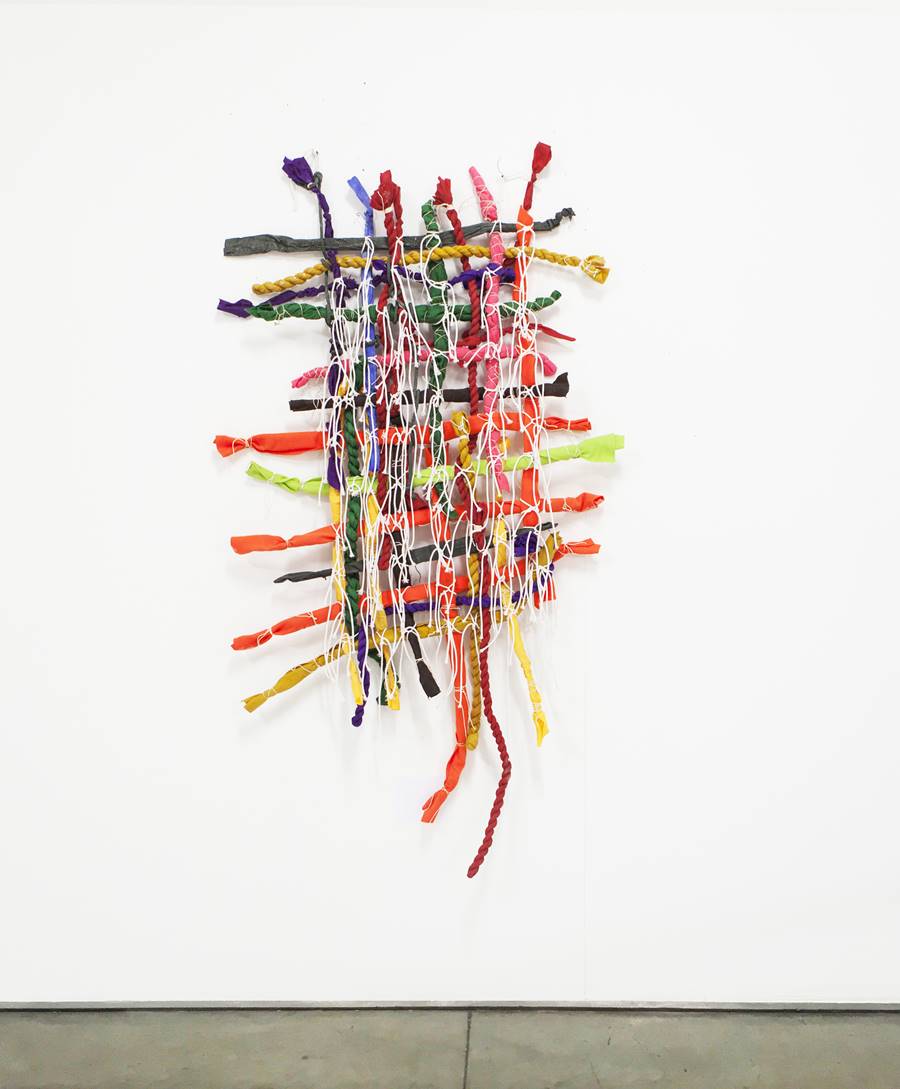
Hassan Sharif, Weaving No. 41 (2015).
Image: Courtesy of the artist and the gallery.
Wander over to Alserkal Avenue:
Dubai’s galleries in the fair’s Contemporary section amount to 12 at Art Dubai this year, all of whom present shows at their home base in Alserkal Avenue, which has now unveiled its $14 million expansion with over 72,000 square meters of galleries, F&B outlets, design spaces, studios and much more.
On the fair ground, Gallery Isabelle van den Eynde is showing a rather unique sculpture by the celebrated conceptual Emirati artist Hassan Sharif, who is also the subject of a small exhibition in Doha’s Mathaf: Arab Museum of Modern Art.
Grey Noise presents new works by the young Pakistani artist Fahd Burki, whose oeuvre is concerned with a lexicon of symbols all rendered in a composition of geometric possibilities. And don’t miss German artist Andre Butzer, who has moved away from the color-frenzied thick-impasto and to black-and-white minimalist work, and is showing at Carbon 12’s space.
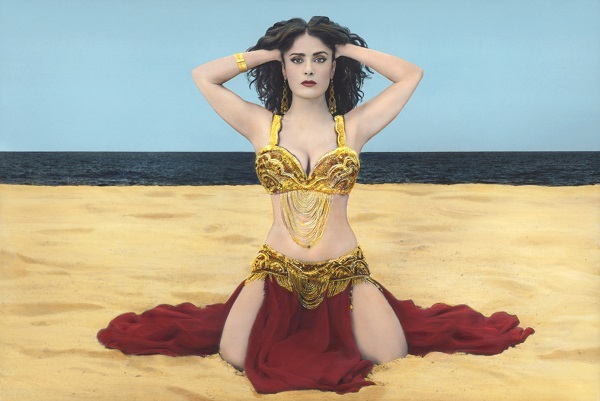
Youssef Nabil, I Saved My Belly Dancer #XIX (2015).
Image: Courtesy of the artist.
Where to See Film:
The Third Line showcases work by Youssef Nabil, whose second film, I Saved My Belly Dancer is a part of the fair’s film program as well as a hypnotizing new work by Joana Hadjithomas and Khalil Joreige.
The Lebanese duo are also staging a major exhibition, “Two Suns in Sunset,” at the Sharjah Art Foundation in collaboration with Jeu de Paume, Paris, Haus der Kunst in Munich and IVAM in Valencia. The Foundation’s Mirage City Cinema is showing six full-length feature films by the artists starting this month and ending in May.